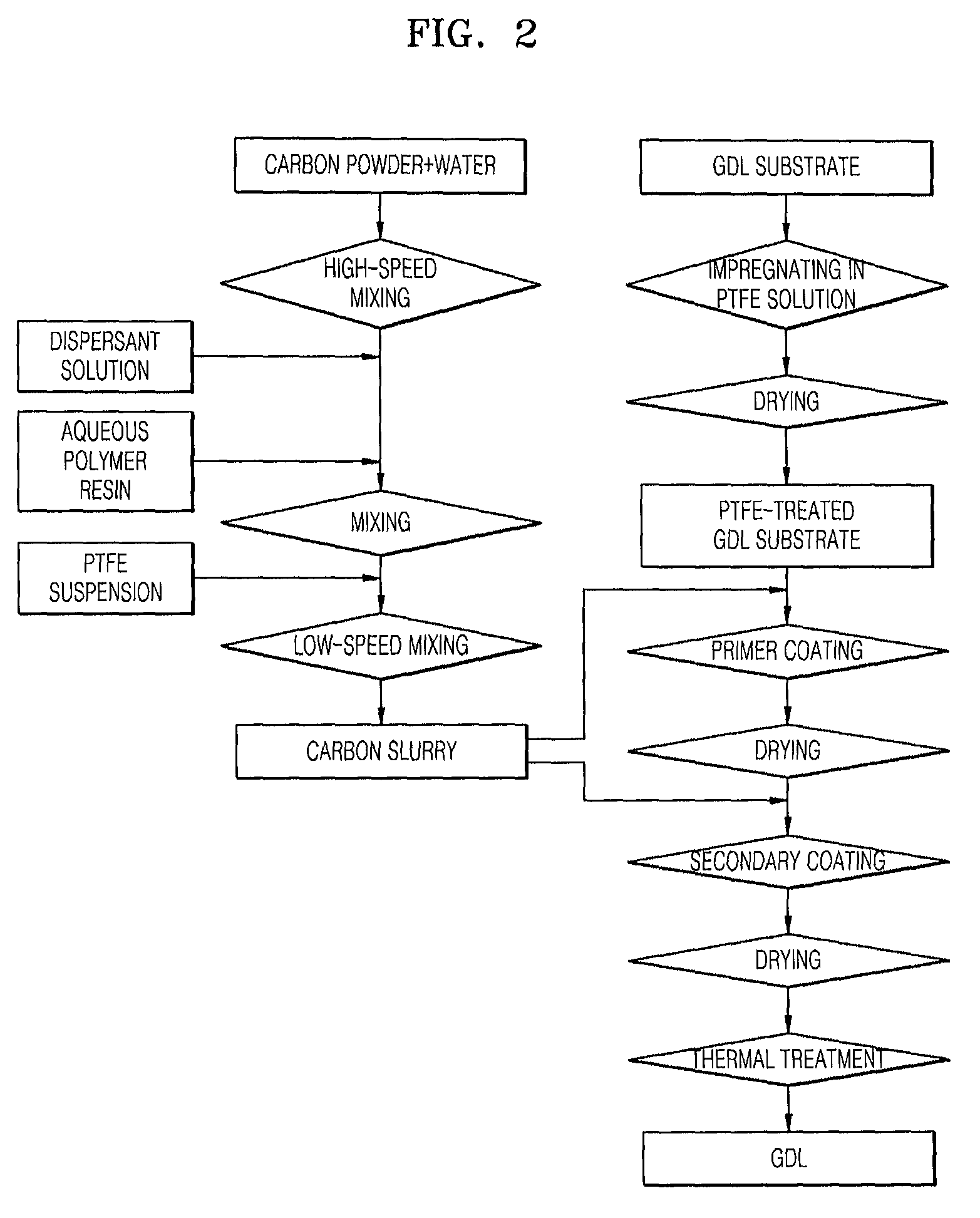Preparation of Gas Diffusion Layer for Fuel Cell
a fuel cell and gas diffusion technology, applied in cell components, electrochemical generators, electrode manufacturing processes, etc., can solve the problems of difficult construction of gas diffusion layer and catalyst layer, inability to use common coating methods, and inability to effectively discharge water generated by hydrogen ions with oxygen in air, etc., to achieve uniform electronic conductivity, efficient electrical connection, and sufficient porosity
- Summary
- Abstract
- Description
- Claims
- Application Information
AI Technical Summary
Benefits of technology
Problems solved by technology
Method used
Image
Examples
example 1
[0073]1,000 g of ultra pure water was added to Vulcan XC-72 (Cabot) and the components were blended in a high-speed mixer (2,000 rpm). A dispersant, Triton X-100 was added thereto and the components were dispersed for one hour. 30 g of carboxymethylcellulose was added to the dispersed solution, and the components were further dispersed for one hour. 30 wt % of PTFE (30J, Dupont) was added to the dispersed solution, and the components were stirred in a low-speed mixer (200 rpm) for one hour to make carbon slurries. At this time, the content of PTFE was adjusted to 30 parts by weight based on 100 parts by weight of the carbon powder.
[0074]Carbon substrates (TGPH-060, Toray) were immersed in a PTFE suspension for five minutes and dried in a 80° C. dry oven for one hour so that the content of PTFE was 30 wt %. Then, the carbon slurries were coated on the carbon substrates using a knife coating method and dried in a 80° C. dry oven for one hour to obtain primer layers with a thickness of...
example 2
[0080]Gas diffusion layers and fuel cells including the same were manufactured in the same manner as in Example 1 except that carbon cloths (AvCarb™ 1071 HCB or AvCarb™ 1071 CCB, Ballard Material Products) were used as substrates of the gas diffusion layers. A voltage drop with respect to current density of the fuel cells was measured.
PUM
 Login to View More
Login to View More Abstract
Description
Claims
Application Information
 Login to View More
Login to View More - R&D
- Intellectual Property
- Life Sciences
- Materials
- Tech Scout
- Unparalleled Data Quality
- Higher Quality Content
- 60% Fewer Hallucinations
Browse by: Latest US Patents, China's latest patents, Technical Efficacy Thesaurus, Application Domain, Technology Topic, Popular Technical Reports.
© 2025 PatSnap. All rights reserved.Legal|Privacy policy|Modern Slavery Act Transparency Statement|Sitemap|About US| Contact US: help@patsnap.com



